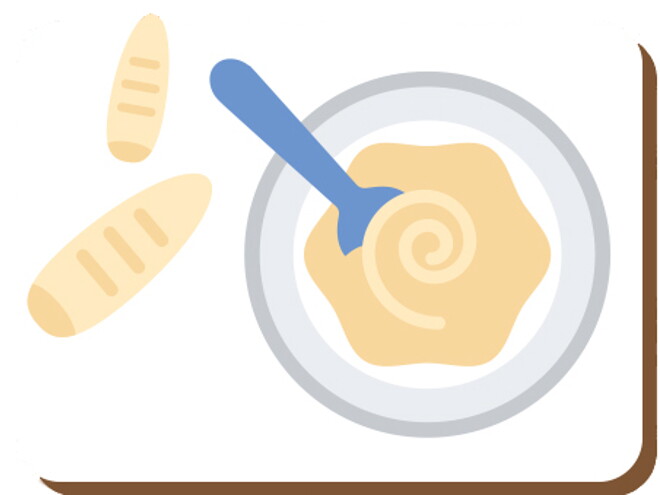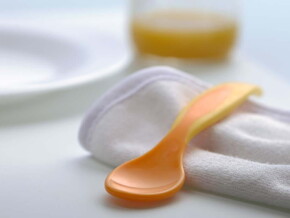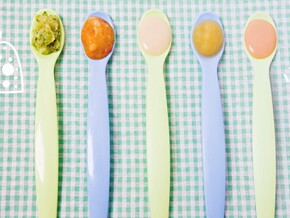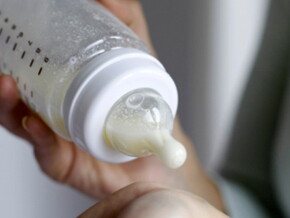
What foods to offer your baby now to encourage healthy eating later?
What foods to offer your baby now to encourage healthy eating later?
Variety is key when you start complementary feeding. Help set them up for a future of healthy eating with these need-to-know numbers and food ideas.
Learn how to promote healthy eating when you start introducing solid foods.

Sources
Pan American Health Organization / World Health Organization. Guiding principles for complementary feeding of the breastfed child. Washington DC, Pan American Health Organization / World Health Organization, 2002.
World Health Organization. Complementary feeding. Family foods for breastfed children. Geneva, World Health Organization, 2000.
World Health Organization. Infant and young child feeding: Model chapter for textbooks for medical students and allied health professionals. Geneva, World Health Organization, 2009.
Related articles

Starting solid foods doesn’t mean stopping breastfeeding or formula feeding
After six months, your little one’s need for energy and some important nutrients (such as iron, zinc, and protein) can’t be met with breast milk or formula alone.
4 mins to read

Baby Solids: Guide & planning pour bébé de 8 mois.
Around the six-month mark, your baby will probably show signs of being ready for bites of their first food.
6 mins to read

How to Switch From Breastfeeding to Bottle-feeding
Whether you want to express breast milk or you’re thinking of supplementing with baby formula, try these 13 tips on how to switch from breastfeeding to bottle-feeding.
7 mins to read

Infant nutrition needs: 6-8 months
As your baby reaches 6-8 months old, some vitamins and minerals are especially important for their health.
4 mins to read

How to prepare and store baby formula
Formula. It’s full of nutrition—but how you prep and store it can serve up some questions, too.
5 mins to read

Benefits of probiotics for babies
This article includes contributions from Dr. Dina Kulik, pediatrician, and Charlotte Geroudet, GD.
5 mins to read

Baby Feeding and Nutrition: The Guide
How will you feed your newborn?
7 mins to read

Did you know?
The way young children are fed may be as important as the food offered
1 min to read

Safe first finger food for babies
By now you've noticed that everything seems to make its way into your little one’s mouth. Once he’s able grasp small objects, eating those little goodies is exactly what he'll try to do.
5 mins to read

How to Choose & Introduce Formula to Your Baby
Choosing and introducing a baby formula can be a difficult decision for any parent.
5 mins to read

3 tips for your baby’s happy, healthy tummy
By Dr. Ted Jablonski, family physician
3 mins to read

How to Switch Formulas
Your baby’s growing and their digestive system is developing, too. Learn how to switch formulas the right way to support your child’s nutritional needs.
3 mins to read

Guide to breastfeeding and feeding positions
Yes, it seems like another pregnancy miracle, but it’s true—your body produces the perfect baby food: Breast milk.
11 mins to read

Did you know?
Around six months of age, baby’s evolving needs call for the introduction of foods
1 min to read

How to strengthen your baby's immune system
By Dr. Ted Jablonski, family physician
3 mins to read

How to increase breast milk supply?
Breastfeeding exclusively for the first six months, and sustained for up to two years or longer with appropriate complementary feeding is important for the nutrition, immunologic protection, growth
4 mins to read

The ins and outs of babies’ digestive system
By Dr. Jeff Habert, family physician
3 mins to read

Benefits of breastfeeding
Experts agree breast milk is best for babies.
4 mins to read

Food Allergies in Babies
There is growing evidence that many factors in the environment play a role in allergies developing in babies.
3 mins to read


